Introduction
The Vaquita (Phocoena sinus), a small porpoise native to the northern Gulf of California, Mexico, is the rarest and most endangered cetacean in the world. With fewer than 20 individuals left in the wild, the vaquita faces imminent extinction due to bycatch in illegal fishing nets. Despite conservation efforts, this elusive species continues to decline, making awareness and action critical for its survival.
In this article, we will explore the vaquita’s habitat, physical characteristics, behavior, threats, and conservation efforts, shedding light on what makes this marine species so unique and why it desperately needs protection.
In the vast, shimmering waters of the northern Gulf of California, an elusive and critically endangered marine mammal silently glides beneath the waves. Known for its petite size, distinct facial markings, and gentle nature, this rare porpoise has captured the attention of conservationists worldwide. As one of the most mysterious cetaceans on the planet, it avoids human interaction, making sightings extremely rare.
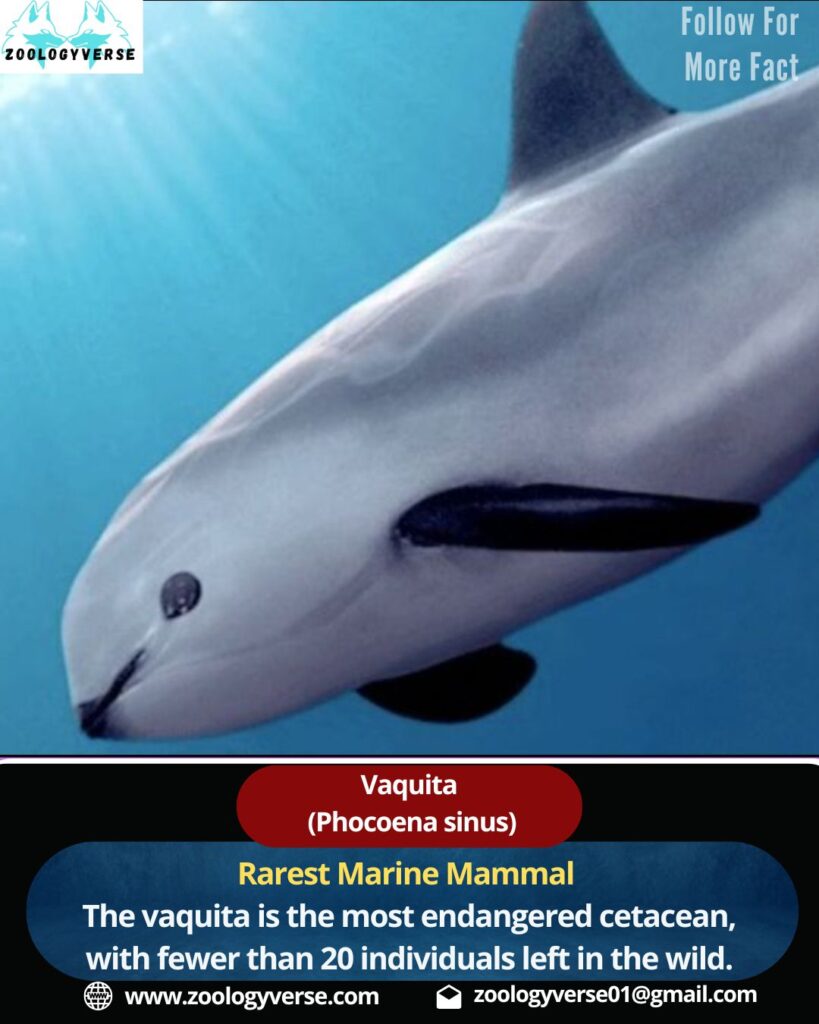
Despite its small stature, this species plays a vital role in maintaining the delicate balance of its marine ecosystem. However, it faces an existential crisis due to human activities. Entanglement in fishing nets, particularly those used for catching an equally endangered fish, has driven its population to alarmingly low numbers. Conservationists are racing against time to protect this remarkable creature before it disappears forever.
With fewer than two dozen individuals remaining in the wild, this marine gem has become a symbol of the urgent need for stronger conservation measures. Efforts to ban destructive fishing practices, enforce marine protection zones, and raise global awareness are crucial to ensuring its survival. Will humanity act in time to save this unique species, or will it become another tragic tale of extinction?
Scientific Classification of Vaquita
Vaquita Classification (Taxonomy)
🔬 Kingdom: Animalia
📌 Phylum: Chordata
🐬 Class: Mammalia
🌊 Order: Cetacea
🔹 Suborder: Odontoceti (toothed whales)
🐋 Family: Phocoenidae (porpoises)
🔍 Genus: Phocoena
🆔 Species: Phocoena sinus
The vaquita (Phocoena sinus) is the smallest and most endangered porpoise species, found exclusively in the northern Gulf of California, Mexico. It is closely related to other porpoises but stands out due to its distinct black eye patches, small size, and elusive nature.
Due to illegal fishing practices and entanglement in gillnets, its population has declined to fewer than 20 individuals, making it one of the rarest marine mammals on Earth.
| Category | Information |
| Scientific Name | Phocoena sinus |
| Common Name | Vaquita |
| Family | Phocoenidae |
| Order | Cetacea |
| Conservation Status | Critically Endangered (IUCN) |
| Habitat | Shallow coastal waters of the Gulf of California |
| Diet | Small fish, squid, crustaceans |
What Does a Vaquita Look Like?
Vaquitas are small, stocky porpoises with unique physical characteristics that set them apart:
- Size: They grow up to 4.5 feet (1.4 meters) long and weigh around 95 lbs (43 kg).
- Coloration: They have a gray body with a pale underside.
- Distinctive Features: Large, dark eye patches and lip markings give them an adorable, almost panda-like appearance.
- Dorsal Fin: Compared to other porpoises, vaquitas have a larger, curved dorsal fin, which helps regulate body temperature in warm waters.
Where Do Vaquitas Live?
Vaquitas are endemic to the northern part of the Gulf of California, Mexico—meaning they exist nowhere else on Earth. They prefer shallow, warm coastal waters, usually staying within 30 miles of the shore. Their habitat is rich in biodiversity, but it is also a hotspot for illegal fishing, which threatens their survival.
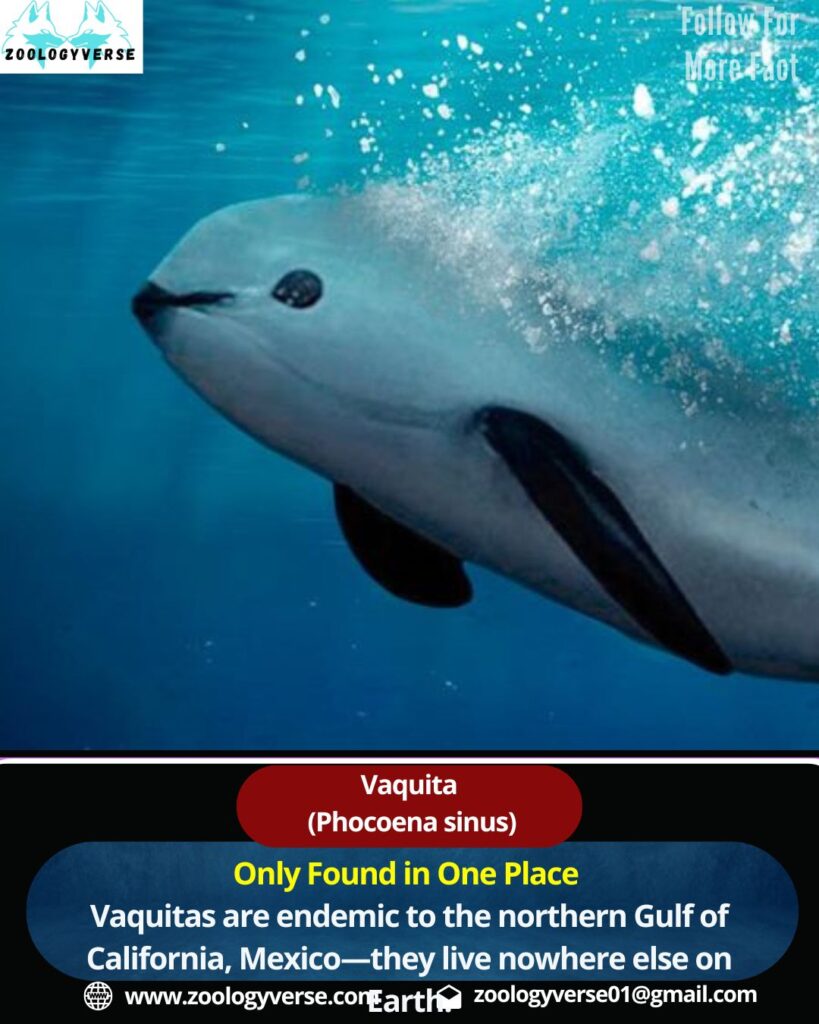
Vaquita Behavior & Diet
Despite being critically endangered, scientists have learned a few key facts about vaquita behavior:
Social Behavior
- Vaquitas are typically solitary or found in small groups of 2–3 individuals.
- Unlike dolphins, they are shy and elusive, avoiding boats and human activity.
Diet & Feeding Habits
- They primarily feed on small fish, squid, and crustaceans.
- Vaquitas use echolocation to navigate and find prey in murky waters.
This rare and elusive porpoise is known for its secretive nature, spending most of its time in the shallow waters of the northern Gulf of California. Unlike some other marine mammals, it is not particularly social and is usually spotted alone or in small groups of two to three individuals. However, on rare occasions, groups of up to ten have been observed. Its shy demeanor and preference for murky waters make sightings extremely uncommon, adding to the mystery surrounding this species.
One of its most distinctive behaviors is its quiet movement through the water. Unlike its more vocal relatives, it communicates using high-pitched clicks, which help it navigate and hunt in its environment. These echolocation clicks allow it to detect prey, avoid obstacles, and stay aware of its surroundings. Because it is so rarely seen at the surface, much of its behavior remains unknown, making research on this species particularly challenging.
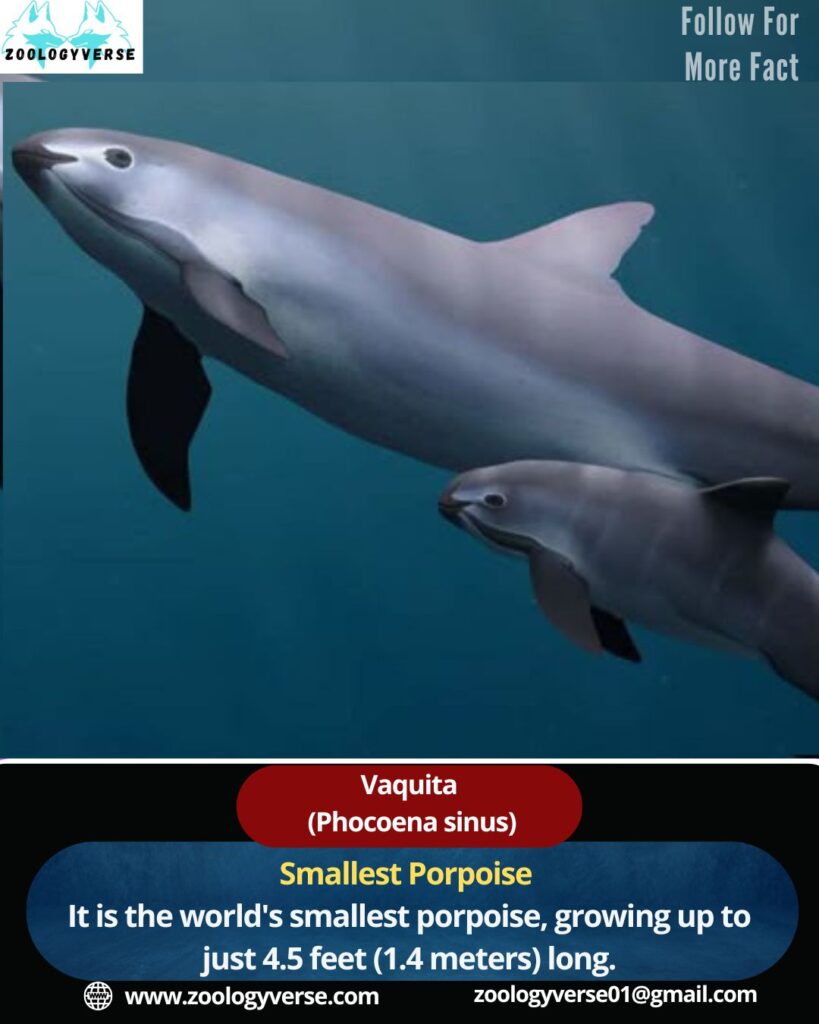
In terms of diet, this porpoise primarily feeds on a variety of small fish, squid, and crustaceans. It is an opportunistic predator, meaning it does not specialize in one type of prey but instead consumes whatever is most readily available in its habitat. Using echolocation, it detects movements of its prey in the water and swiftly captures them with its small but sharp teeth. Its hunting style is quick and efficient, allowing it to consume enough food to sustain its energy needs.
Unlike some larger marine mammals, this species does not engage in long migrations. Instead, it stays within a relatively small home range, making conservation efforts focused on a single geographic area more effective. However, this limited range also makes it highly vulnerable to threats such as fishing nets and habitat destruction.
Despite its adaptability in feeding habits, the greatest challenge to its survival comes from human activities, particularly illegal fishing. Conservationists continue to study its behavior and diet to better understand its ecological role and develop strategies to protect it. By reducing threats and protecting its habitat, there is still a chance to secure a future for this rare and remarkable marine mammal.
Why is the Vaquita Endangered?
1. Bycatch in Illegal Fishing Nets
The primary threat to vaquitas is accidental entanglement in gillnets, particularly those used for catching totoaba fish (Totoaba macdonaldi). The totoaba’s swim bladder is highly valued in the illegal Chinese market, selling for thousands of dollars. Unfortunately, vaquitas become trapped and drown in these nets.
2. Habitat Destruction
Pollution, climate change, and habitat degradation further threaten the vaquita’s survival.
3. Small Population & Low Genetic Diversity
With fewer than 20 individuals left, the species suffers from low genetic diversity, making recovery even more challenging.
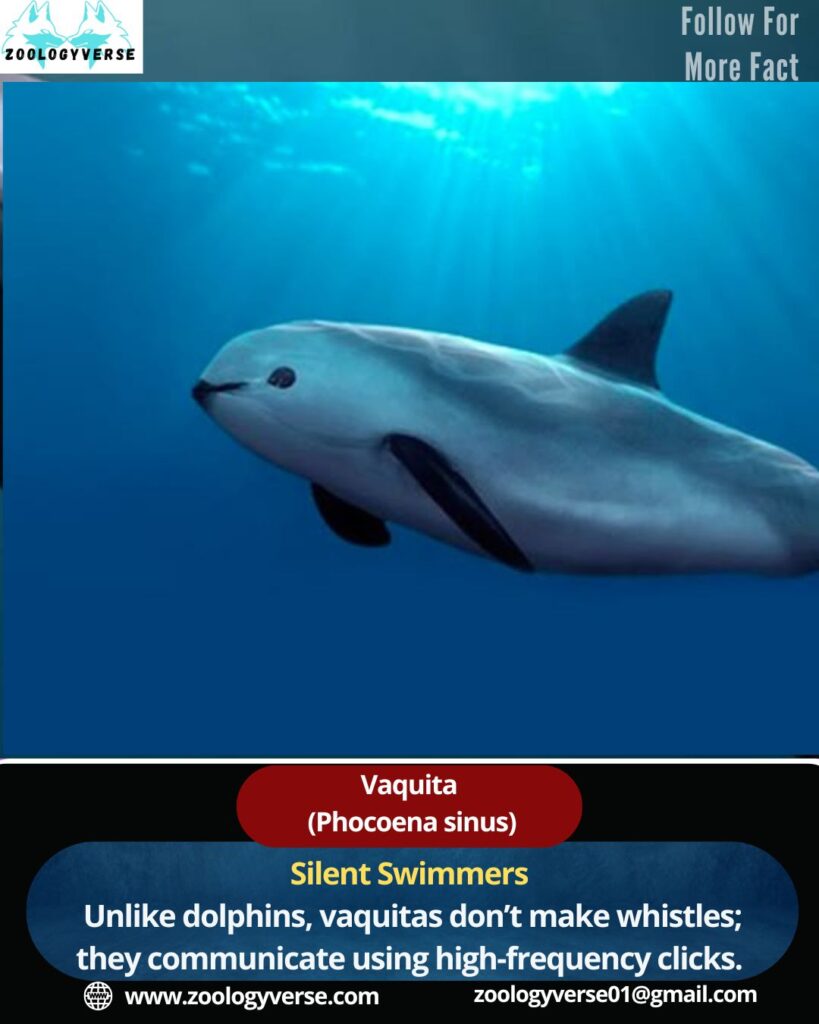
Conservation Efforts to Save the Vaquita
Several organizations and governments are working tirelessly to prevent the vaquita’s extinction:
✅ Gillnet Bans & Fishing Regulations
The Mexican government has banned gillnet fishing in the vaquita’s habitat, though enforcement remains a challenge.
✅ Vaquita Safe Havens
Marine conservation areas have been established, but illegal fishing continues to pose a threat.
✅ Raising Awareness & International Action
Conservation groups like Sea Shepherd and WWF are actively patrolling the Gulf of California, removing illegal nets and monitoring vaquita populations.
✅ Captive Breeding Attempts?
Unlike some endangered species, vaquitas do not thrive in captivity, making in-situ conservation (protecting them in the wild) the only viable solution.
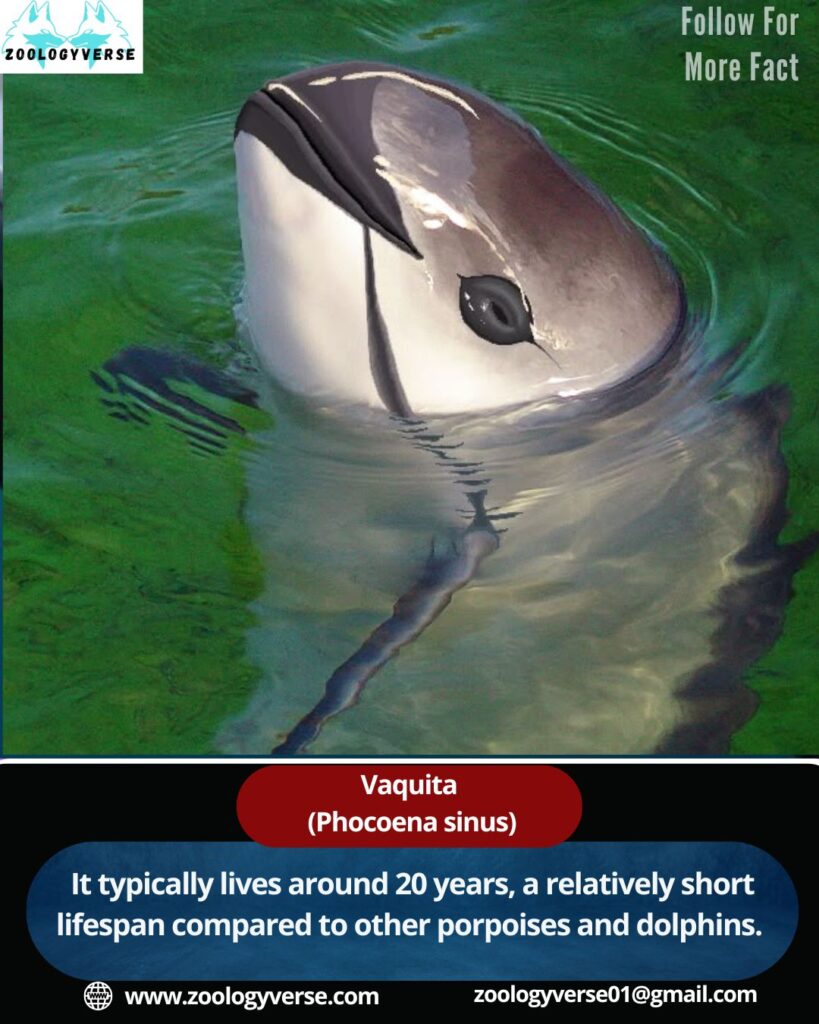
Can the Vaquita Still Be Saved?
While the situation is dire, hope remains if illegal fishing is stopped immediately and conservation efforts are strictly enforced. Success stories like the California condor and black-footed ferret show that species on the brink of extinction can recover with strong conservation action.
The battle to save this critically endangered porpoise is at a crossroads. With fewer than 20 individuals left in the wild, its future is uncertain, but not entirely hopeless. While the situation is dire, conservationists believe that if immediate and decisive action is taken, this unique marine mammal can still be saved from extinction.
The greatest threat to its survival comes from entanglement in illegal fishing nets, particularly those set to catch an endangered fish prized for its swim bladder. These gillnets, though banned in certain areas, continue to be used, putting this species at constant risk. Without effective enforcement and stricter measures to prevent illegal fishing, its numbers will continue to dwindle.
Conservation efforts have been ongoing, with marine protection zones established to create a safe habitat free from human threats. International organizations, researchers, and governments have pushed for better enforcement of fishing bans, as well as alternative livelihoods for local fishermen to reduce dependency on harmful practices. Rescue and rehabilitation programs have also been attempted, but the species’ inability to survive in captivity has made in-situ protection the only viable option.
There is still hope. This marine mammal has shown resilience, and if given the chance, its population could stabilize. Immediate action is required—removing deadly fishing nets, strengthening conservation laws, and increasing awareness about its plight are critical steps. Public support, pressure on governments, and investment in sustainable solutions can make a difference.
Time is running out, but extinction is not inevitable. With global collaboration and unwavering commitment, this elusive porpoise can still have a fighting chance to survive and thrive in the waters where it belongs.
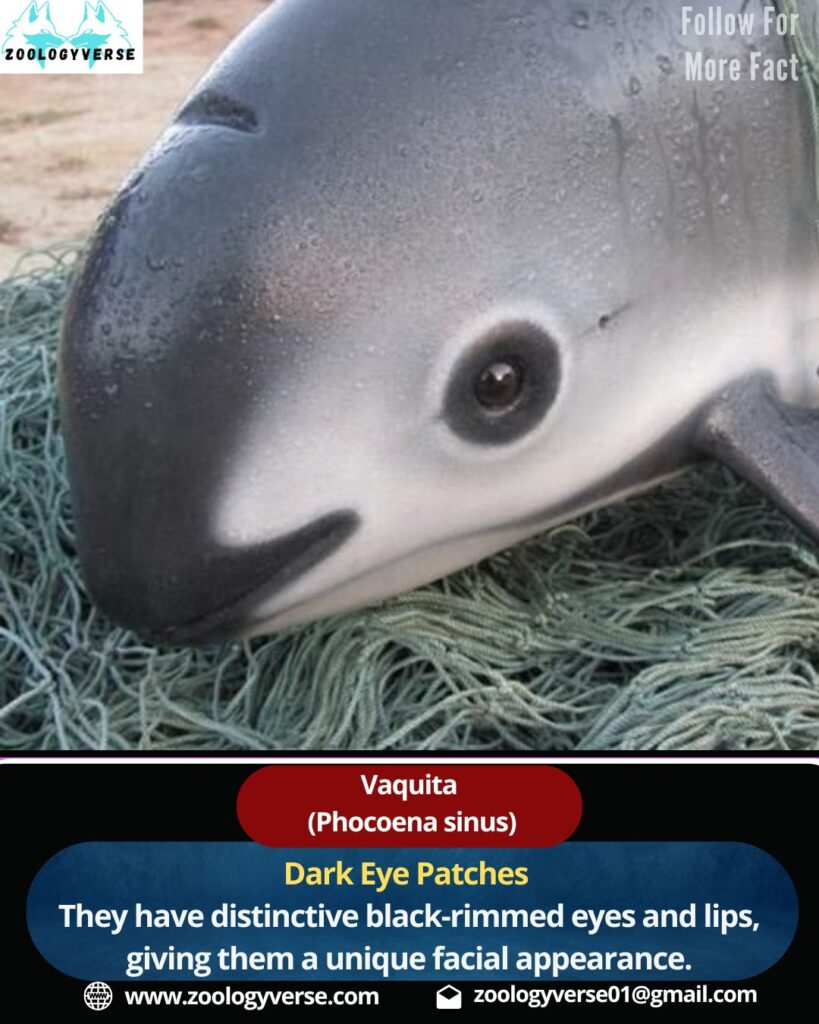
FAQs About Vaquitas
❓ How many vaquitas are left?
As of the latest estimates, fewer than 20 vaquitas remain in the wild.
❓ Can vaquitas be saved from extinction?
Yes, but urgent action is needed to eliminate illegal fishing, enforce marine protection laws, and prevent further habitat destruction.
❓ Why are vaquitas so rare?
Vaquitas have a small natural range, and their numbers have declined due to bycatch in gillnets, illegal totoaba fishing, and habitat destruction.
❓ Do vaquitas have predators?
Vaquitas do not have significant natural predators, but humans pose the biggest threat to their survival.
❓ Why are vaquitas important?
Vaquitas are an indicator species, meaning their health reflects the overall health of the Gulf of California ecosystem. Their disappearance would disrupt the marine food chain.
Interesting Facts About the Vaquita 🐬
1️⃣ Rarest Marine Mammal – The vaquita is the most endangered cetacean, with fewer than 20 individuals left in the wild.
2️⃣ Smallest Porpoise – It is the world’s smallest porpoise, growing up to just 4.5 feet (1.4 meters) long.
3️⃣ Shy & Solitary – Vaquitas are elusive and prefer to avoid boats and human activity.
4️⃣ Dark Eye Patches – They have distinctive black-rimmed eyes and lips, giving them a unique facial appearance.
5️⃣ Only Found in One Place – Vaquitas are endemic to the northern Gulf of California, Mexico—they live nowhere else on Earth.
6️⃣ Threatened by Fishing Nets – The biggest threat to vaquitas is getting entangled in illegal gillnets used to catch totoaba fish.
7️⃣ They Don’t Survive in Captivity – All attempts to keep vaquitas in protected enclosures have failed, making conservation in the wild their only hope.
8️⃣ Silent Swimmers – Unlike dolphins, vaquitas don’t make whistles; they communicate using high-frequency clicks.
9️⃣ Fast Maturity – Vaquitas reach sexual maturity at around 3-6 years old and can give birth once every two years.
🔟 Critically Endangered – Listed as Critically Endangered by the IUCN, the vaquita may become extinct within a few years without intervention.
The vaquita is on the brink of extinction, but with global awareness, strict enforcement of gillnet bans, and continued conservation efforts, there is still hope. The fate of the vaquita serves as a critical reminder of the impact of human activities on marine ecosystems.
The survival of this rare marine mammal hangs by a thread, serving as a stark reminder of the devastating impact human activities can have on delicate ecosystems. With its numbers dwindling to critically low levels, the urgency to act has never been greater. Conservationists, governments, and concerned individuals must come together to enforce stricter fishing regulations, eliminate harmful gillnets, and protect the last remaining individuals from the brink of extinction.
The loss of even a single species disrupts the intricate balance of marine life, affecting entire food chains and ecosystems. This tiny porpoise, though often unseen, plays a vital role in the health of its environment. Its potential disappearance would not only be a tragic loss for biodiversity but also a failure of human responsibility toward nature.
Despite the grim reality, hope still exists. If immediate and decisive action is taken, there is a chance to reverse the damage and provide a safe future for this magnificent creature. Raising awareness, supporting conservation initiatives, and advocating for stronger marine protection laws are crucial steps toward ensuring that future generations can witness the beauty of this remarkable species in its natural habitat.
The fate of this extraordinary porpoise lies in the hands of those who choose to protect it. Will the world take action before it’s too late?
🌍 Want to learn more about endangered species? Visit ZoologyVerse for in-depth wildlife articles!
Follow us on Instagram and Facebook

I don’t ordinarily comment but I gotta tell thanks for the post on this perfect one : D.